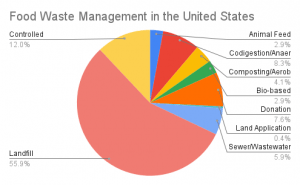The graph I created is one that shows the annual CO2 emissions per capita per U.S. State with data up until 2017.

(I couldn’t get the chart to upload with better quality for some reason, so please use this link instead to view it as a PDF)
In metric tonnes, this data helps to show the amount of CO2 emissions produced per state per person. When looking at this graph, it is very easy to see where the high amounts of CO2 emissions per capita are found: states like Wyoming, North Dakota, and Alaska stand out as the worst offenders for CO2 emissions per capita. This is in contrast to states like New York, California, Oregon, and Maryland who comparatively have very small CO2 emissions per capita.
This could lead people to believe that states like Wyoming, North Dakota, Alaska, etc. are more responsible for the large CO2 emissions put out annually by the U.S. as opposed to states like New York, California, etc., but that would be incorrect. What this chart tells us instead is that states on this chart that appear to be putting out gargantuan amounts of CO2 are instead putting out large amounts of CO2 in comparison to their population. A state like Wyoming that has a relatively small population but large amounts of farming/agriculture could appear to produce extreme amounts of CO2 compared to a state like New York, when in reality New York could be putting out much more CO2, but due to its large population it doesn’t appear to be as extreme of a CO2 emitter as Wyoming.
WORKS CITED
https://www.eia.gov/environment/emissions/state/analysis/



